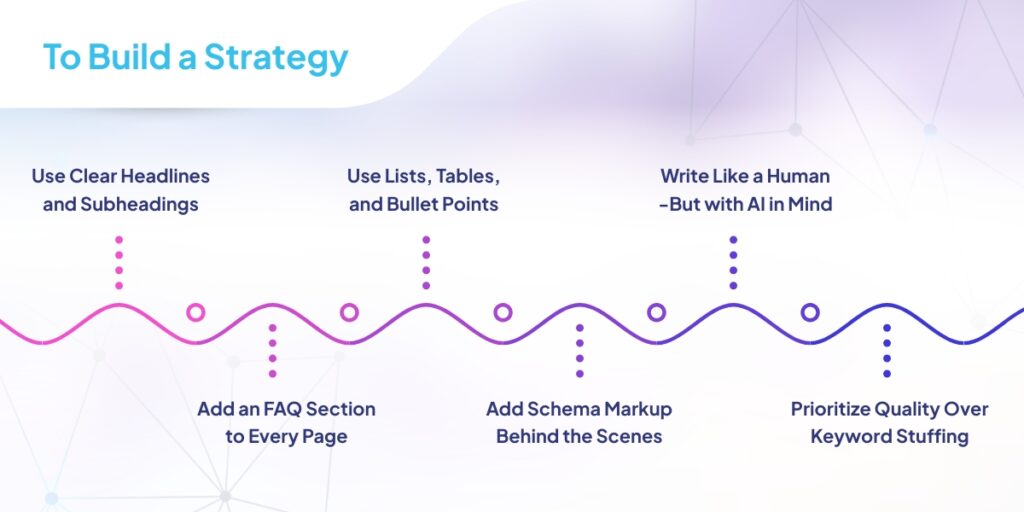There was a time when online visibility was all about mastering the traditional Search Engine Optimization (SEO). Add the right keywords, polish your meta tags, and watch your site climb through Google’s ranking. But those days are gone. People don’t just “Google it” anymore. They are asking full questions to ChatGPT, talking to Alexa, and expecting instant and conversational answers. Static websites and keyword-stuffed pages just don’t cut it anymore. This is the era of Answer Engine Optimization (AEO) and Generative Engine Optimization (GEO), where being visible means showing up with the right answer, at the right moment, in the right format.
If these acronyms make your head spin, don’t worry. You’re not alone. But understanding what they mean and how they differ can help your business thrive in a world where search is no longer one-size-fits-all. In this blog, we will explain the key differences between SEO, AEO, and GEO along with why your business needs all three to stay visible. Let’s break it down simply!
SEO: Your Website’s Best Friend Since Forever
SEO is like the classic rock of digital marketing—it’s been around forever, and it still gets the job done. It helps your website appear in traditional search engine results when someone types in a question or keyword like “best coffee shop near me” or “affordable graphic designer.
Here’s how it works:
- Find the keywords people are searching for.
- Write content around those keywords.
- Make sure your site loads fast, looks good on mobile, and is easy to navigate.
- Build authority with backlinks and consistent content.
SEO brings long-term and sustainable traffic to a website. It helps you appear when potential customers search for products, services, or information. But here’s the thing: the way people search is changing!
From Search to Speak: Why AEO Matters Today
AEO stands for Answer Engine Optimization. It focuses on getting your content picked up by voice search tools like Siri, Alexa, and Google Assistant—or displayed in featured snippets and the “People Also Ask” section on Google.
It differs from SEO because instead of optimizing rankings, you are optimizing to provide the best possible answer in the shortest time.
To win at AEO you must:
- Use clear, concise language.
- Answer questions directly (think FAQs).
- Add structured data (schema markup) to help search engines understand your content.
- Prioritize helpful, conversational answers.
More people are using voice search to find instant answers—whether they’re cooking, driving, or multitasking. If your business isn’t AEO-optimized, you’re missing those micro-moments.
Writing for AI: The Rise of GEO
Let’s talk about GEO, short for Generative Engine Optimization. It’s all about making sure your content is picked up by AI tools like ChatGPT, Google Gemini, and Bing Copilot when they generate answers.
It’s not about ranking or snippets. It’s about making your content useful to AI models that generate answers from multiple sources.
To make it work:
- Write in a natural and conversational tone.
- Structure your content clearly with headings and lists.
- Provide context and depth, not just surface-level info.
- Think about how an AI would interpret your content, not just human.
With more users turning to AI assistants for information and recommendations, your content must be AI-friendly to remain visible and relevant.
SEO, AEO, and GEO: What’s the Real Difference?
While SEO once covered most of what we knew about online visibility, the digital world has grown far beyond it. Understanding the distinct roles of SEO, AEO, and GEO helps you cover every touchpoint where your audience is searching—whether by typing, talking, or chatting with AI.
Let’s take a closer look at SEO, AEO, and GEO:
| Approach | What it optimizes for | Where it shows up | User behavior |
| SEO (Search Engine Optimization) | Ranking high in traditional search engine results for relevant keywords and search intent | Google Search, Bing, Yahoo | Typing search queries (e.g., “best pizza in NYC”) |
| AEO (Answer Engine Optimization) | Providing concise and relevant answers to specific questions | Google featured snippets, People Also Ask boxes, voice assistants like Siri and Alexa | Asking natural-language questions out loud or via mobile (e.g., “What’s the best time to post on Instagram?”) |
| GEO (Generative Engine Optimization) | Ensuring your content is understood, summarized, and referenced by AI-driven tools | ChatGPT, Google Gemini, Bing Copilot, Perplexity | Conversational or exploratory queries typed or spoken into AI chat tools (e.g., “How do I start a podcast on a budget?”) |
Mastering SEO, AEO, and GEO means your brand isn’t just visible—it’s discoverable, relevant, and trusted everywhere your audience is looking.
The Real Risk of Overlooking SEO, AEO, and GEO in Your Strategy
You wouldn’t build a house with only one wall—so why build your online strategy on just one approach? Relying on just one of the three SEO, AEO, and GEO is like trying to win a relay race with only one runner. Today’s visibility requires a holistic approach that ensures you’re present and helpful wherever your customers are—on the Search Engine Results Pages (SERPs), in snippets, and inside generative AI tools.
Let’s break down what happens if you rely on only one (SEO, AEO, and GEO):
If you only focus on SEO:
- You may rank in traditional search engines but miss out on being featured in voice search or AI-generated results.
- You risk becoming invisible as users shift toward asking conversational questions rather than typing keywords.
If you only focus on AEO:
- You might appear in featured snippets or get read out loud by Alexa—but without ranking on search engine result pages (SERPs), you lose broader visibility and long-term traffic.
- Your content could be overly short and not offer enough depth for users wanting more than quick answers.
If you only focus on GEO:
- You could become a go-to source for AI assistants but be totally absent from Google or Bing, where billions of searches still happen every day.
- Without optimizing your site technically, AI may find your content—but real people won’t.

How to Build a Strategy That Covers SEO, AEO, and GEO?
While all of this may seem like a lot to process, the good news is that you don’t need three separate content strategies to win with SEO, AEO, and GEO. You just need one smart, flexible approach that speaks to people and machines. Here’s how to do it:
1. Use Clear Headlines and Subheadings
Your titles shouldn’t just be catchy—they should also be useful.
- For SEO: Headings signal structure and relevance to search engines.
- For AEO: Clear subheadings make it easy for Google to lift your answer into a featured snippet.
- For GEO: AI tools like ChatGPT use headings to understand what each section is about and respond with context.
Think of your headings as signposts—guiding both humans and algorithms to the good stuff.
2. Add an FAQ Section to Every Page
FAQs are gold for discoverability across all platforms.
- SEO loves the long-tail keywords embedded in question form.
- AEO uses these questions to pull quick answers for voice and snippet results.
- GEO picks them up as bite-sized, helpful nuggets to include in AI-generated responses.
Pro tip: Use real questions your customers ask. They’re more natural, and more likely to be searched.
3. Use Lists, Tables, and Bullet Points
Formatting matters—a lot.
- Bullets and tables make it easier for Google to extract structured answers.
- They allow voice assistants to read answers in a clean, logical way.
- AI tools can scan and repackage this info into summaries or responses.
Short and scannable content performs better—no matter where it’s read.
4. Add Schema Markup Behind the Scenes
It’s not visible to users, but schema is a behind-the-scenes powerhouse.
- It tells search engines exactly what your content is—whether it’s an article, event, review, or product.
- That helps improve visibility in rich snippets and voice search results.
- It also boosts credibility with AI models that rely on structured data to summarize your content.
A little code goes a long way toward making your content “machine friendly.”
5. Write Like a Human—But with AI in Mind
You’re not writing an essay for a robot. But you are writing for tools that read like humans do.
- GEO thrives on natural, conversational language.
- SEO and AEO still rely on clarity, structure, and directness.
Think: “How would I explain this to a curious friend?” That’s usually a sweet spot.
6. Prioritize Quality Over Keyword Stuffing
You don’t need to cram “best SEO tips” into every sentence.
- Today’s search engines—and AI tools—are smarter than that.
- They reward content that’s original, helpful, and relevant.
- Overused keywords can actually hurt your ranking and trustworthiness.
Create content that educates, informs, or solves a problem. That’s what ranks, gets shared, and gets surfaced in AI answers.
To Wrap it Up!
Search isn’t what it used to be. It’s no longer limited to just typing a question into Google and scrolling through a list of results. Whether someone is typing on Google, asking a voice assistant, or chatting with an AI tool, the way people search has evolved—and your strategy should too. That’s where SEO, AEO, and GEO each play a critical role.
At Kleza Solutions, we understand that staying visible means being present everywhere your audience is searching—whether it’s through a search engine, a voice command, or an AI chat. We help you build a strategy that ticks all the boxes with structured content, real answers, and optimized messaging for every platform. So instead of just chasing rankings, focus on being relevant, clear, and truly helpful—because that’s what your audience is looking for now. If you plan to build an approach that combines SEO, AEO, and GEO, reach us today at +1 913-800-2728 and our experts will guide you.
Links
- https://developers.google.com/search/docs/fundamentals/seo-starter-guide#:~:text=SEO%E2%80%94short%20for%20search%20engine,site%20through%20a%20search%20engine.
- https://en.wikipedia.org/wiki/Amazon_Alexa
- https://writesonic.com/blog/answer-engine-optimization-tools
- https://seosandwitch.com/generative-engine-optimization-stats/
- https://umbraco.com/knowledge-base/schema-markup/#:~:text=In%20short%2C%20schema%20markup%20is,the%20search%20engine%20can%20understand.
- https://blog.google/technology/ai/google-gemini-ai/
- https://www.microsoft.com/en-us/microsoft-copilot/for-individuals/do-more-with-ai/general-ai/what-is-copilot?form=MA13KP

